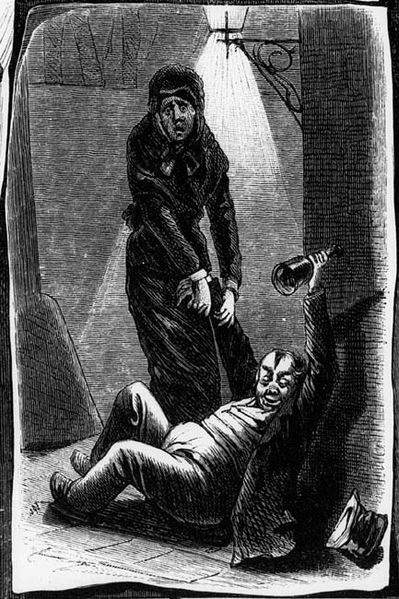Alcoholism pathophysiology
 From Wikidoc - Reading time: 3 min
From Wikidoc - Reading time: 3 min
| https://https://www.youtube.com/watch?v=e5DxD6Tuxxw%7C350}} |
|
Alcoholism Microchapters |
|
Diagnosis |
|---|
|
Treatment |
|
Case Studies |
|
Alcoholism pathophysiology On the Web |
|
American Roentgen Ray Society Images of Alcoholism pathophysiology |
|
Risk calculators and risk factors for Alcoholism pathophysiology |
Editor-In-Chief: C. Michael Gibson, M.S., M.D. [1]Delband Yekta Moazami, M.D.[2]
Overview[edit | edit source]
Excessive alcohol intake has the ability to change a person's brain and lead to alcohol addiction. Every year, alcohol causes 88,000 deaths in the United States alone, as well as other health conditions such as cancers, such as colorectal cancer, and mental health issues. While environmental factors affect drinking behavior, genetic factors also play a role in the risk of alcoholism.
Pathophysiology[edit | edit source]
Genetics[edit | edit source]
Certain genes that influence alcohol metabolism and neurotransmitters have been discovered to either increase or decrease the risk. Alcoholism susceptibility can also be affected by gene-environment interactions.[1] It is now well understood that the initiation of a complex psychiatric condition, such as alcoholism, is not caused by a single genetic mutation. Rather than a single locus or a simple molecular case, multiple genes or a sequence of complex molecular events. As a result of recent research using new –omics technologies, a change from single-locus studies to genome-wide approaches has occurred. As a result, genetic markers may be identified. molecular patterns and quantifications events at the mRNA, protein, and DNA levels Metabolites are a type of metabolite.[2]
Psychiatric geneticists John I. Nurnberger, Jr., and Laura Jean Bierut suggest that alcoholism does not have a single cause—including genetic—but that genes do play an important role "by affecting processes in the body and brain that interact with one another and with an individual's life experiences to produce protection or susceptibility." They also report that less than a dozen alcoholism-related genes have been identified, but that more likely await discovery.[3]
At least one genetic test exists for an allele that is correlated to alcoholism and opiate addiction.[4] Human dopamine receptor genes have a detectable variation referred to as the DRD2 TaqI polymorphism. Those who possess the A1 allele (variation) of this polymorphism have a small but significant tendency towards addiction to opiates and endorphin-releasing drugs like alcohol.[5] Although this allele is slightly more common in alcoholics and opiate addicts, it is not by itself an adequate predictor of alcoholism, and some researchers argue that evidence for DRD2 is contradictory.[3]

References[edit | edit source]
- ↑ Zhu EC, Soundy TJ, Hu Y (May 2017). "Genetics of Alcoholism". S D Med. 70 (5): 225–227. PMID 28813755.
- ↑ Awofala AA (2013). "Molecular and genetic determinants of alcohol dependence". J Addict Dis. 32 (3): 293–309. doi:10.1080/10550887.2013.824329. PMID 24074195.
- ↑ 3.0 3.1 Nurnberger, Jr., John I., and Bierut, Laura Jean. "Seeking the Connections: Alcoholism and our Genes." Scientific American, Apr2007, Vol. 296, Issue 4.
- ↑ New York Daily News (William Sherman) Test targets addiction gene 11 February 2006
- ↑ Ulf Berggren, Claudia Fahlke, Erik Aronsson, Aikaterini Karanti, Matts Eriksson, Kaj Blennow, Dag Thelle, Henrik Zetterberg and Jan Balldin The TaqIA DRD2 A1 Allele Is Associated with Alcohol-Dependence although its Effect Size Is Small Alcohol and Alcoholism 2006 41(5):479-485; doi:10.1093/alcalc/agl043
 KSF
KSF